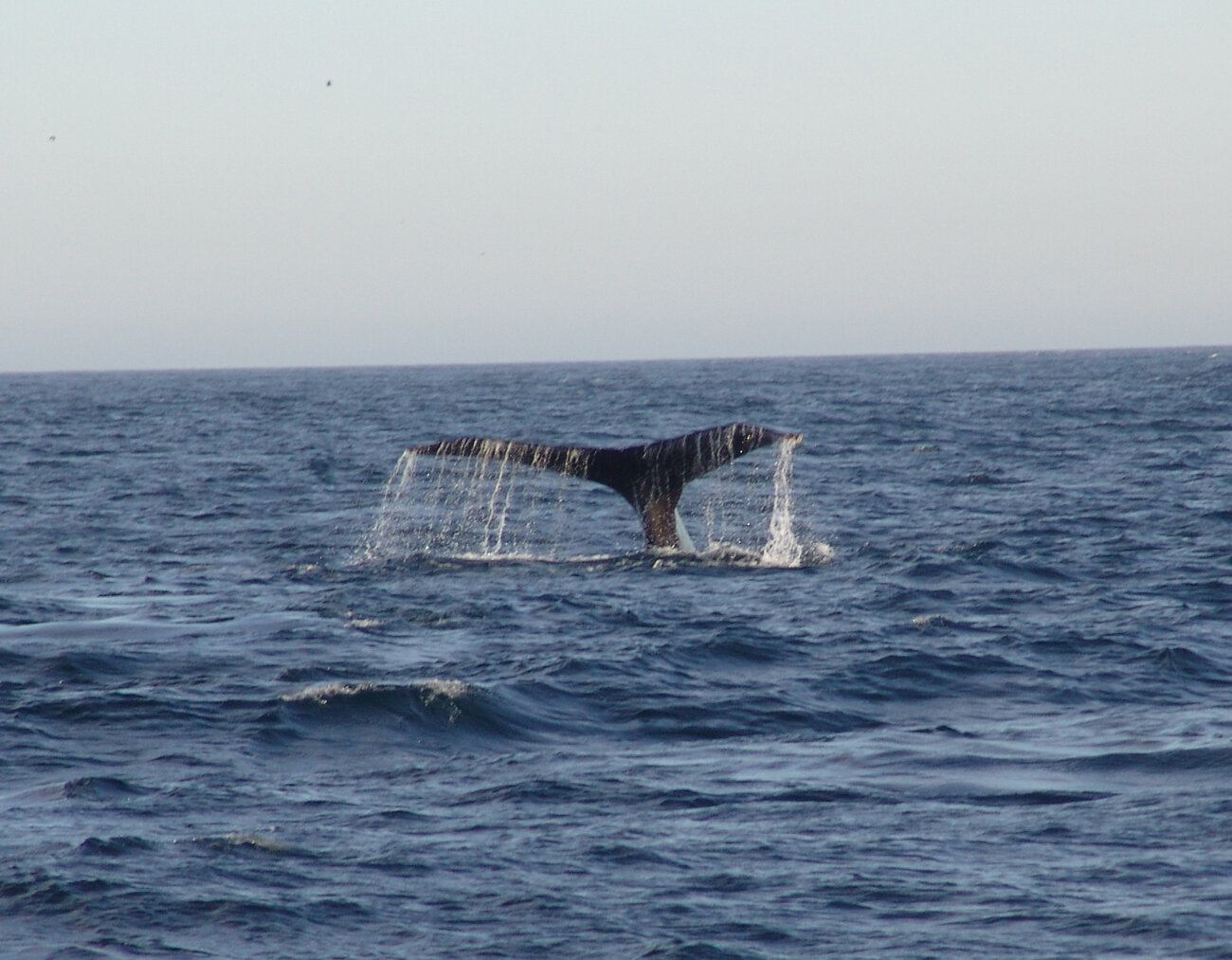Humpback Whales
Megaptera novaeangliae
About
Humpback whales, with their dramatic bounds and jumps are common sites off the coast of the Channel Islands. They are usually seen starting in the spring around May up until fall in September. There are numerous excursions and boating tours that provide you with whale watching opportunities during this time off the coast of the Channel Islands.
Fun Facts
Humpback whales have some of the most diverse and longest sounds made by any creature on earth.
Humpbacks get their name from the dorsal fin that acts as a “hump” on their backs, seen when the whale arches from the water.
Interestingly, humpback whales can also be seen swimming on their backs.
Humpback whales are slow swimmers compared to other whales.
They can reach up to sixteen miles per hour, but average only two to nine miles per hour.
Appearance
At close range, the humpback is one of the easiest whales to identify. At a distance, however, there can be some confusion with other large whales, especially blue and sperm whales. For size, humpback whales are generally 45 to 56 inches in length with females averaging slightly on the longer side. Whales weight in at around 35 tons or an astounding 70,000 pounds that can be attained by adults.
Range
Although humpbacks are found off the coast of the Channel Islands, they are often also found across other oceans depending on the time of year and their migration pattern. This can include other tropical winter grounds or open ocean temperate and sub-polar habitats.
Feeding
The humpback whale has a unique way of feeding on krill, typically lunging and gulping mouthfuls of water. They also perform a technique called bubble netting where they blow air that captures or creates a net of bubbles around fish or krill, afterwards the whale will swim through and enclose the now trapped food into it’s open mouth. Humpbacks feed and breed in coastal waters, often near human areas. They often migrate from the tropics to the polar or sub-polar regions, sometimes reaching the ice edges on both hemispheres.
Conservation
Humpback whales are protected by the Endangered Species Act and the Marine Mammal Protection Act. This makes it illegal to kill or harass a whale in the United States’ waters. Humpback whales are also protected internationally since 1966 and have been illegal to hunt anywhere in the world.

